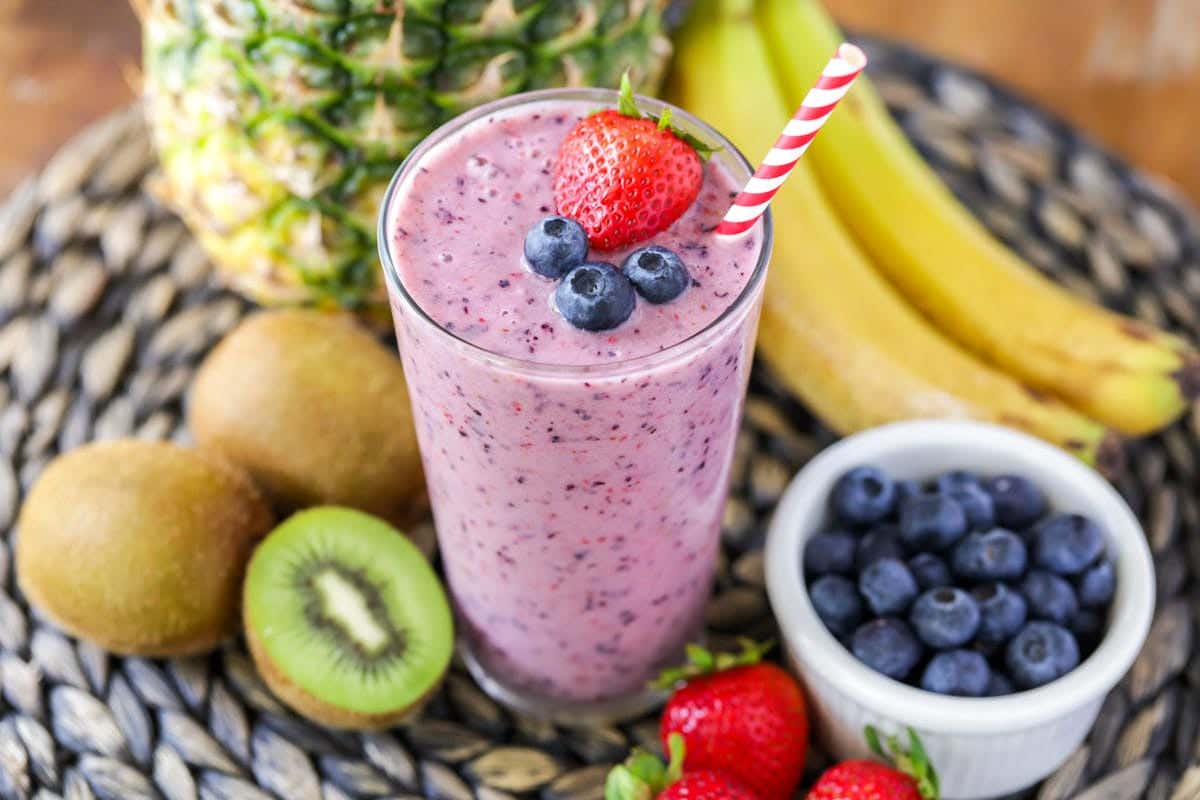The Art of the Smoothie: Getting the most health benefits from your fruit choices
When it comes to smoothies, a splash of banana, a handful of blueberries, and you’re set for a health boost. Or are you?

[Aug. 28, 2023: Staff Writer, The Brighter Side of News]
A number of popular beverages contain toxic metal concentrations surpassing federal drinking water standards. (CREDIT: Creative Commons)
In today's bustling world, the term "smoothie" evokes thoughts of refreshing drinks that not only satisfy our thirst but also serve as a nutritious choice for those constantly on the go. A splash of banana, a handful of blueberries, and you're set for a health boost. Or are you?
A groundbreaking study from the University of California, Davis, is giving everyone, from the health-conscious to the casual smoothie drinker, food for thought.
While many of us appreciate the delightful simplicity of blending fruits and vegetables, it's crucial to understand that there's an underlying science to it. The study, which has been making waves since its publication in the Royal Society of Chemistry’s journal Food and Function, dives deep into this science, highlighting the complex interplay of ingredients that determines the nutritional value of your favorite drink.
Central to this exploration is the enzyme polyphenol oxidase (PPO) present in several fruits and vegetables. Ever wondered why sliced apples or peeled bananas turn brown so quickly? The answer lies in this enzyme's activity when exposed to air, and this very reaction, while visually evident, has now been shown to have a more profound implication on nutrition, particularly on flavanols.
Related Stories:
Flavanols might not be a household name yet, but given the findings from this study, they're set to become one. Found in abundant quantities in apples, pears, grapes, and the highly prized cocoa, these bioactive compounds come with a range of health benefits, particularly for heart and cognitive functions.
“We wanted to explore how a staple of our diet, like the ever-popular banana-based smoothie, affects the absorption of these critical flavanols,” comments lead author Javier Ottaviani, a luminary in the field and director of the Core Laboratory of Mars Edge. Ottaviani is also associated with the UC Davis Department of Nutrition.
The Smoothie Experiment
The methodology was both innovative and straightforward. The researchers provided participants with two distinct smoothies: one banana-based, boasting high PPO activity, and the other a medley of berries, characterized by low PPO activity. To benchmark and understand the body's flavanol absorption better, participants were also given a flavanol capsule.
New research shows that the right combination of blending fruits can give your body a nutritional boost. (CREDIT: Getty Images)
The results? Eye-opening. Drinking the banana smoothie led to an astonishing 84% reduction in flavanol levels when compared to the control. Ottaviani remarks, “The rapid drop in flavanol levels after consuming a banana-infused smoothie was unexpected. It underscores how even simple food preparations and combinations can significantly impact the absorption of crucial dietary compounds.”
In light of the health benefits associated with flavanols, the Academy of Nutrition and Dietetics last year recommended a daily intake of 400 to 600 milligrams for optimal cardiometabolic health. For those seeking to reach these numbers with their smoothies, Ottaviani advises a careful selection of ingredients. Flavanol-rich fruits like berries can be paired with low PPO foods like oranges, mangoes, pineapples, or even yogurt.
The findings of this study could spur future research into how other foods are prepared and the effects on flavanols. (CREDIT: University of Reading)
However, Ottaviani doesn't advocate for giving bananas the boot entirely. Their nutritional profile remains stellar. Instead, for those enamored with the fruit, it's a matter of thoughtful pairing – perhaps avoiding a mix with high-flavanol content fruits like berries or grapes.
Looking Ahead: The Future of Food and Flavanols
The revelations from this study do not merely pertain to the smoothie world. It paves the way for broader research into how our food preparations can influence flavanol absorption. Drawing from the study, Ottaviani mentions the significance of exploring other food sources, like tea, another significant dietary source of flavanols. Depending on its preparation, the available flavanol levels might vary. "The world of polyphenols and bioactive compounds is vast, and there's so much more to learn and understand," Ottaviani adds.
Flavan-3-ols are bioactive compounds found in a variety of fruits and vegetables (F&V) that have been linked to positive health benefits. (CREDIT: Royal Society of Chemistry)
A team of dedicated researchers from various institutions, including Jodi Ensunsa, Reedmond Fong, Jennifer Kimball, and Alan Crozier, all from UC Davis's Department of Nutrition, contributed to this significant research. The study also had collaborations from the University of Reading, King Saud University, and Mars, Inc.
Funding for this research was provided by Mars, Inc., a firm that has continually shown interest in unraveling the potential benefits of cocoa flavanols for human health.
While smoothies will remain a favorite for many, understanding the intricate chemistry behind them can ensure that every sip is as beneficial as it is delightful.
Note: Materials provided by The Brighter Side of News. Content may be edited for style and length.
Like these kind of feel good stories? Get the Brighter Side of News' newsletter.
Joseph Shavit
Head Science News Writer | Communicating Innovation & Discovery
Based in Los Angeles, Joseph Shavit is an accomplished science journalist, head science news writer and co-founder at The Brighter Side of News, where he translates cutting-edge discoveries into compelling stories for a broad audience. With a strong background spanning science, business, product management, media leadership, and entrepreneurship, Joseph brings a unique perspective to science communication. His expertise allows him to uncover the intersection of technological advancements and market potential, shedding light on how groundbreaking research evolves into transformative products and industries.



